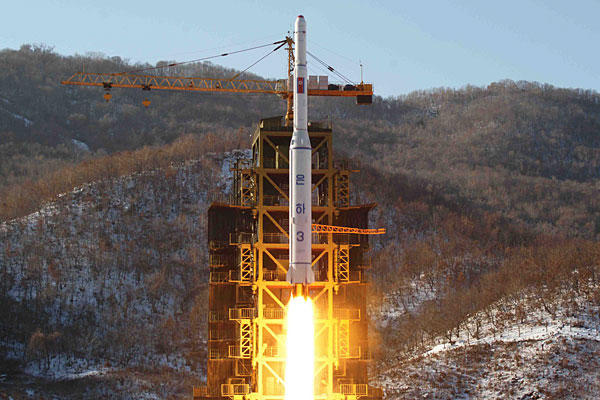As the United States government grapples over the 2014 federal budget proposal, one expenditure in particular demands attention: the B61 gravity nuclear bomb. As the country collectively groans under the weight of sequestration, this specific item has seen a boom in its allowance, receiving a funding increase of $537 million, or a 44.5% increase, since 2013.
These additional funds reflect the Obama administration’s plans to upgrade the aging Cold War weapons system. At the end of the B61 programme’s $10 billion makeover, the US can expect to have 400 new weapons, complete with guided tail kits for increased precision and accuracy.
[captionpix align=”left” theme=”elegant” width=”300″ imgsrc=”http://natoassociation.ca/wp-content/uploads/2013/05/el-1b1.jpg”]
While this will be “a significant upgrade of the US nuclear capability in Europe,” according to Hans Kristensen, of the Federation of American Scientists “it flies directly in the face of the pledges Obama made in 2010 that he would not deploy new weapons.” Kristensen’s point is well taken: not only does Obama’s plan renege upon the promises made in Prague in 2009 and in the Nuclear Posture Review in 2010, but this move comes at a crucial time, as the President hopes to court the Russian government into a new round of nuclear reduction talks, ostensibly tackling the question of strategic nuclear weapons arsenals which have long remained beyond the scope of arms control deals.
Those debating the proposition for the B61 upgrade would do well to take heed of the startling historical comparisons that can and should be drawn between 1959 and now. Months before the Cuban Missile Crisis, President Dwight D. Eisenhower deployed Jupiter intermediate range ballistic missiles (IRBMs) into Turkey. An often forgotten strategic move on the part of the United States, Eisenhower’s decision would come to torment the Kennedy administration, provoking the Soviet Union and destabilizing the Cold War balance.
Major American figures, from McGeorge Bundy to Robert McNamara, argue that the placement of these weapons in Europe—and more importantly, in the Soviet’s backyard — compelled Nikita Khrushchev to move IRBMs into Cuba in 1962. In other words, the Cuban Missile Crisis was not just a belligerent play by the Soviet Union, but rather a reaction to the deployment of the US missiles into its backyard. The rest of that story is history; never has the world come as close to the brink of nuclear catastrophe.
It is notable that the placement of the IRBMs within striking distance of Moscow was not coincidental. At the height of the Cold War, this was a symbolic measure meant to be a dramatic showing of US military might and a public display of the strong linkages between American and European security affairs. In other words, this tactical nuclear shield was as much an overt move to protect the European allies from the conventional superiority of the USSR as it was a thinly veiled political gesture meant to demonstrate the infallibility of the NATO alliance.
The baffling part of this Cold War standoff is that seemingly no one at the time believed the missiles held any strategic utility. “It would have been better to dump them in the ocean,” Eisenhower complained, “instead of trying to dump them on our allies,” by deploying them to Europe.
Though these comments were made more than forty years ago, such sentiments could easily be in reference to the present situation. The American’s B61s hold little, if any, strategic significance: Ploughshare Fund quotes a senior NATO official saying that the weapons “have no military value.”
Thus, as a bomb of little strategic utility, it is clear that the reinvestment in the programme is driven by political motives. Because the bombs are hosted by NATO member states, the B61s undoubtedly represent an alliance-building opportunity, and their deployment can be construed as a gesture of political goodwill. This is demonstrated by the fact that some eastern European states have resisted their withdrawal, fearing it might be taken as a sign of a weakening US commitment to defend them against an increasingly belligerent Russia. In other words, the B61s are thought of as a symbol of the potency of the NATO alliance.
However, it is a fallacy to believe that the presence of weapons is always a guarantee of security, and inversely, that their absence will mean NATO’s insecurity. The acquisition of an additional 200 B61s will do little to increase European security, especially in light of the fact that 180 weapons are already deployed in Belgium, Germany, Italy, the Netherlands and —most notably— Turkey.
It is important to note that the mere presence of the B61s in Europe is fueling regional insecurity. Given the light-weight and streamlined nature of these weapons, they are more susceptible to theft. More alarmingly, the host nation security at “most sites” in Europe, where US nuclear weapons are deployed, do not meet the Defense Department’s security requirements. An instance in 2010 in which Belgian peace activists penetrated the Kleine Brogel Air Base (believed to house 10-20 B61 nuclear weapons) is a dire illustration of how much is at stake. Moreover, there is a particular irony to the fact that the $537 million to be allotted to the programme’s upgrades comes at the expense of a $460 million cut to nuclear non-proliferation activities, including the Global Threat Reduction Initiative to reduce and protect vulnerable nuclear and radiological materials worldwide.
Finally, the B61 revamp holds the potential of escalating tensions among the US and Russia, whilst also undermining potential disarmament talks in the future. Granted, strategic arms reductions have long been a moot point in arms control discussions, long-evaded by the Russians and beyond the remit of historical treaties. However, doubling-down on the existing programme is only a further guarantee that these weapons will continue to exist beyond the scope of bilateral arms control.
One is compelled to ask whether the potential alliance-building opportunity the B61s present is worth the strategic and economic costs that the historical record indicates will incur. Is the NATO alliance really so fragile that the US and other member nations are willing to invite potentially calamitous threats to their national security and economic well-being in an attempt to publicly demonstrate the strength of their partnerships?




